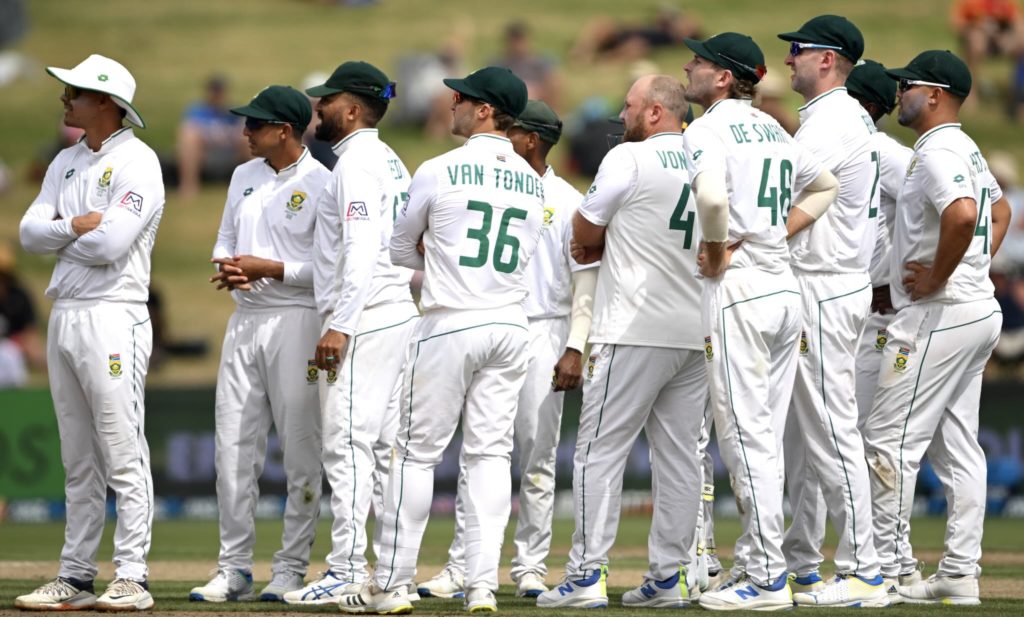The tour that should never have been, ended with a clutch of harsh realisations for the Proteas and the selectors, writes RYAN VREDE.
In the wake of a 281-run first Test defeat, Proteas head coach Shukri Conrad described the experience of contesting the match with six debutants as, “Like Burnley going to Anfield, you know you’re going to have to live on breadcrumbs, and every now and then when a slice comes around you’ve got to grab it with both hands, and we didn’t.”
I’ve criticised Conrad’s predecessors for being evasive and, often, blatantly dishonest with the media and public, so I appreciated his candour.
His analogy was inaccurate, though. While he is correct in comparing his Proteas side with Burnley, New Zealand isn’t comparable to Anfield’s residents, Liverpool, who are one of Europe’s best football teams. The Black Caps are more Tottenham Hotspur – littered with talent and imposing at home, but in a rebuilding phase, with obvious deficiencies and hardly a world-class outfit.
Conrad’s team and the national selectors will reflect on a series, which, in defeat, surrendered a 17-series unbeaten run dating back to 1932, with more questions than answers.
They were blitzed in the first Test but were in complete control at 202-4 on day three of the second. That amounted to a 233-run lead on a wicket that offered little to the seamers, and manageable turn and bounce for the spinners.
Burnley had Tottenham rocked. But their next five wickets fell for just 33 runs, many of those to shots that are commonplace in the game’s lower reaches.
They fed themselves breadcrumbs.
They were then starved of hope as Kane Williamson systematically and clinically carried his bat in a 267-run chase. In a strike bowling context, the Proteas were a one-trick pony named Dane Piedt, and, given his workload across two Tests, the off-spinner’s threat waned and eventually disappeared altogether.
Piedt’s fatigue and resulting impotency shouldn’t detract from a phenomenal Test comeback. He turns 34 soon but has presented himself as a highly competent Test player on whom Conrad can depend.
The same can’t be said of the bulk of the men who contested the series.
Any batting challenge was going to be built around the Test experience of Zubayr Hamza and Keegan Petersen. Instead, they averaged in the mid-20s and have cast doubt on their Test careers.
Shaun von Berg’s first Test cap is likely to be his only Test cap. His leg spin has carried a mediocre threat at the domestic level this season (five matches, 15 wickets, an average of 26.73 and a strike rate of 56.93) and was exposed as being deeply ineffective on the Test stage. The queue of South African quality spinners who take the ball away from right-handers is not long, but even so, Von Berg is close to the back of it.
Wicketkeeper Clyde Fortuin had the opportunity to unseat a struggling Kyle Verreynne but was exposed as technically deficient and mentally frail in the context of the demands of Test cricket. He averages 26.35 across 121 first-class innings, and had an average of 27 in the recent SA A series against the West Indies A, which suggests that he was fortunate to get the Test chance he squandered.
There were glimpses of quality from Neil Brand, Raynard van Tonder, Ruan de Swart, Tshepo Moreki and Dane Paterson. But none possesses the sit-up-and-watch gift that defines David Beddingham. He averages nearly 50 across seven Test innings, and while his game needs refinement, the 29-year-old has not looked like an impostor at the elite level. He is the gold standard for what a player transitioning to Test cricket should be.
WATCH: ‘Bedingham showed his class’
Instead, the Proteas leave New Zealand with the competency of their next best in serious doubt. Last week I worried about the efficacy of South African domestic cricket as a preparing ground for Test cricket.
And after the battering Burnley took at White Hart Lane, those concerns only deepened.
Photo: Hannah Peters/Getty Images







